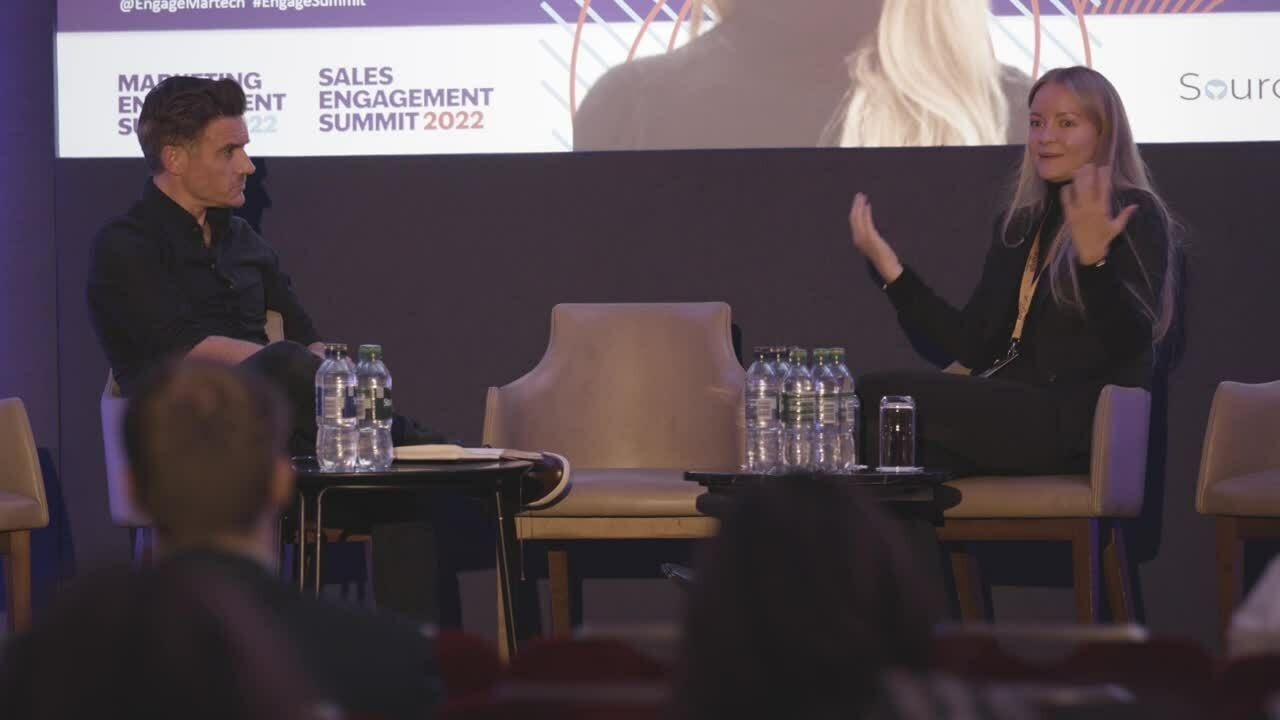How Saying Goodbye To MQLs Drives Sales And Marketing Alignment

By Simon Daniels, Principal Analyst at Forrester Research
At Forrester, we’ve been talking about the complexity of the B2B purchase process extending beyond MQLs for quite some time. Focusing on individual leads provides a very limited view of the group tasked with identifying and selecting high-consideration solutions to business issues. The existence of these groups, making B2B buying decisions and representing multiple departments, roles, and personas, is backed up by Forrester research.
According to data from our Buyers’ Journey Survey 2022, more than 50% of B2B buyers participated in consensus or committee buying scenarios. (These generally range from a medium-sized purchase including three to five people to a large purchase involving several departments and executive leadership). More anecdotally, we’ve had clients tell us that when marketing delivers three or more buying group members to sales, they see a 50% increase in their conversion rates from meetings to closed won.
THE ROLE OF BUYING GROUPS IN MARKETING AND SALES ALIGNMENT
That would seem reason enough to say goodbye to MQLs and adopt an opportunity and buying group-based demand process. The good news doesn’t stop there though, with marketing and sales alignment being a key beneficiary of moving to a buyer-centric approach. This of course is almost the holy grail of B2B marketing and sales that most of us have been pursuing our whole careers, seemingly without ever quite achieving it. Here are just some of the reasons why opportunities and buying groups have such an impact:
- Literally getting on the same page. Sales teams already work opportunities as their primary focus and multiple buying group members can be connected to the opportunity. When marketing (and revenue development reps for that matter) join sales working on the same opportunities, everyone has the same view in a single place, rather than a blizzard of unconnected leads. Now, engagement from buying group members is captured in one place, enabling collaboration across marketing, the RDR team, and sales. This shared focus is transformational in driving alignment.
- Visibility over shared objectives. Marketing, RDR teams, and sales all agreeing on the target accounts, opportunities, buying groups, and buying group profiles lays the foundation for extremely robust alignment. This shared vision of the end goal everyone is working towards brings respective roles and responsibilities into sharp focus, greatly improving the effectiveness of collaboration and fostering a strong sense of teamwork. Everyone can see how an opportunity relates to a solution and the revenue it ultimately represents to the business.
- One place to go for reporting. When working across a combination of leads and opportunities inside a CRM system, we can find ourselves jumping through hoops to achieve an aligned view of performance. The opportunity entity is perfectly placed to support revenue analytics by tracking stage changes, the solution being sold, buying group members, and deal value. In particular, the temptation to try and link individual leads to an opportunity is removed, eliminating some of the false conversion and other narratives with which we’ve been kidding ourselves for so long.
- Distinguishing between opportunity types. Part of the buying group concept rests on opportunities having different types, spanning new business, retention, and growth. Establishing and identifying this distinction makes appropriate collaboration and division of responsibilities much easier. An early-stage opportunity might be entirely handled by marketing until it reaches maturity, while a renewal likely falls to sales. At the same time, multiple opportunities can be in-flight simultaneously across types together with different solutions. This visibility makes alignment between the right players in landing each one much easier.
- Clarifying the path winning deals take. Building on this concept, defining the path that deals take through the demand management process is a further point of alignment. Like opportunity type itself, with concomitant responsibility allocated at each step, establishing opportunity paths ensures accountability across revenue teams, with smooth hand-offs and well-defined SLAs. This in turn can be further refined across buyer segments and forms part of the revenue production plan, a component of aligned revenue planning that is designed to ensure marketing and sales are working together in lockstep.
Effective go-to-market teams have graduated from treating buyers as individual leads to recognising the reality of cross-functional buying groups. This enables marketing and sales to engage buying group members more effectively and work together as they progress opportunities along the path to purchase. This is the alignment utopia we’ve all been seeking!

Simon Daniels, Principal Analyst, Forrester


